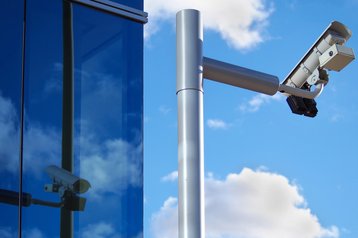Data might be the most valuable strategic resource we have, but only when it’s used effectively. Although siloed data helps keep individual systems simple, it also represents a missed opportunity. Unity of data is the key to creating truly powerful business intelligence. This integration of data and the linking together of sensors and actuators with AI efficiencies generates actionable insights that can lead to significant operational efficiencies across a wide range of industries and sectors.
Smart buildings and cities are a great example of the power of data integration. Currently, buildings draw 40 percent of the world’s energy and contribute to 33 percent of its greenhouse gas emissions. A smart building, with its various management systems integrated, could expect to cut energy and maintenance costs by 25 percent annually through reactively controlling heating, ventilation and air conditioning (HVAC), its lighting systems, and intelligently managing worker placement. Cities today consume 60-80 percent of the world’s energy and Cisco estimates that information-led cities could improve their energy efficiency by 30 percent over 20 years. This is the power of alignment. Properly analysed data connects services with the people that use them, integrating a broad system into an efficient whole.
So why isn’t this always the case in the data center? Today's climate is one of increased scrutiny over energy efficiency, asset security and service quality in which data centers must also deal with increased processing and heat requirements as customers demand ever-more-complex data analysis
Building security and hardware management often exist in separate siloes, yet data centers need to make use of every possible resource available to them if they are to meet demand.
The new smart networking paradigm
Thankfully the need for alignment comes at a time when the tools to make it happen are more readily available than ever before. Internet of Things (IoT) devices now have more power to collect, process and analyse data internally. Working on the edge vastly reduces their bandwidth requirements, lowers external processing demands and reduces end-to-end latency from 100-250ms to 10-20ms by simply taking out the need to continually send vast amounts of data back and forth to cloud servers.
IoT devices are, at last, beginning to speak the same language as each other, too. The growing popularity of the Message Queue Telemetry Transport (MQTT) protocol, which sits on top of industry-standard TCP/IP networking, means integrating data from these devices into server or cloud-based applications is easier than ever before. MQTT is open source and based on open standards, which makes developing new endpoint integrations or automations based on its data straightforward, even when they are bespoke applications which are designed to meet unique needs. Indeed, there is now no reason for a data center's security and camera monitoring systems to exist on a separate network away from its existing Data center Infrastructure Management (DCIM) sensors.
The evolving role of the network camera
As edge processing grows, a camera's role is about far more than simply streaming high-quality video. It's a powerful and versatile sensor which can transform information management. Cameras have become a crucial part of critical machines. They monitor inaccessible parts of vital equipment, help crane operators precisely place loads in the position they need to be, and aid logistics teams in tracking those loads wherever they may go. Quite simply, they make new efficiencies possible. In the retail space, AI-based video analytics helps retailers drill down to finer details, generating data about customer numbers, their dwell times, individual customer recurrence and conversion rates. Data helps optimize store layouts and streamline checkout processes.
In the data center, the simplicity and open nature of MQTT offers administrators the opportunity to integrate new, powerful data which meets the demands of modern DCIM systems by taking cameras beyond security and using them as intelligent sensors. Take, for example, heat monitoring. An internal heat sensor might notice a hot spot on a server rack and feed its data through to a thermal camera; that camera could then relay an image containing all relevant data to a video management system, giving an engineer a true visual indicator of where the issue lies. Simultaneously an alarm sounds via an MQTT-running IP horn speaker and pushes an alert to an operator's mobile device.
Cameras may even be better suited to some data-center monitoring roles than any other hardware. Infrared cameras can be used as the first port of call to detect gas leaks or smoke, while other cameras and sensors can detect leaking water or identify whether a server cabinet is open or closed. This data can be simply integrated with the DCIM and displayed as visual-overlay images, providing information from an array of devices and sensors across the site. Armed with accurate information, well-informed engineers are able to act immediately to rectify any issues. A combination of data from a variety of sensors may in turn lead to greater efficiencies, such as improving cooling solutions so that they are fine-tuned for optimal energy use.
New opportunities and solutions
Finding new ways of interpreting and utilizing the data that network cameras collect, or even flipping the process around and employing camera features in new and innovative ways, is also an opportunity to vastly lower the energy use, cost, and complexity requirements of DCIM. Data centers are pushing to find efficiencies wherever possible, so the use of modern network cameras for a wide range of applications could be a shrewd move. In addition, those that already use cameras for security purposes can exploit the full potential of these devices for operational benefits too, ensuring that fewer devices are needed and functions are kept simple.
The time has come for the truly smart data center to become the norm. This doesn’t mean throwing out existing DCIM solutions or switching critical sensors – it simply means harnessing every piece of existing data to create new opportunities while making the most from cutting-edge connected devices and solutions for a smarter, safer world.ut Axis, please visit our website www.axis.com





